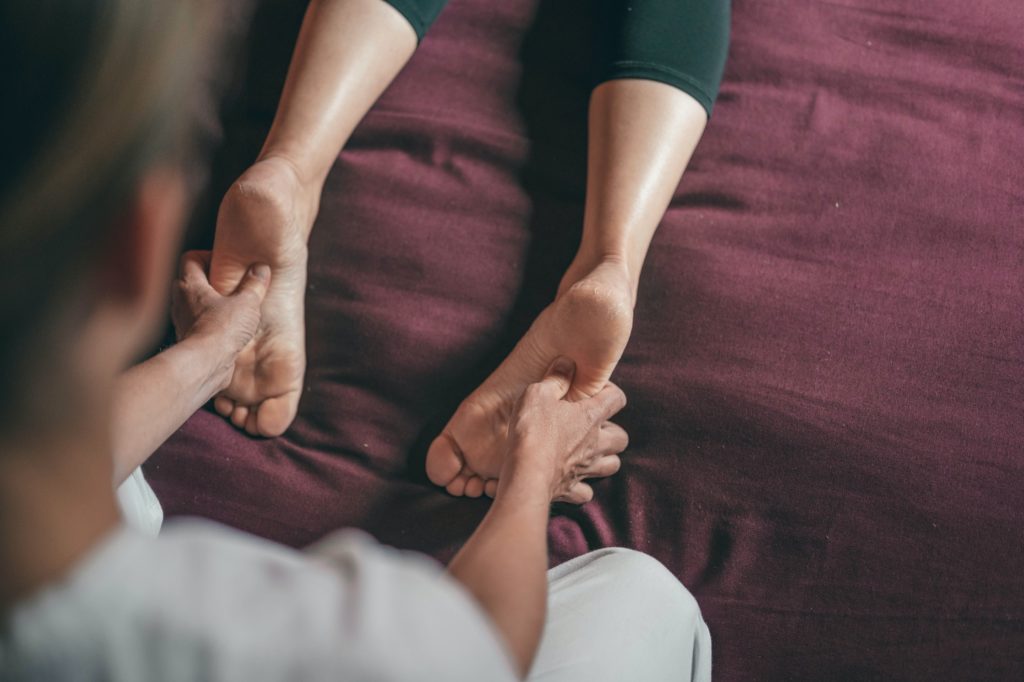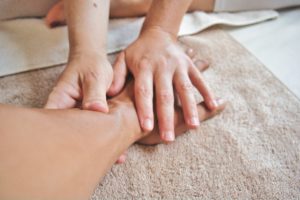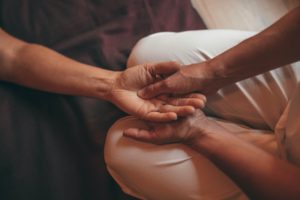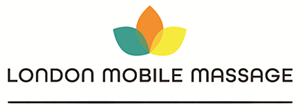
Reflexology: How It Works
Reflexology can release stress when a specialist uses thumb and finger techniques on specific parts of the feet, hands, and ears. Many believe that this, in turn, helps the body heal and regenerate itself. How does this work?
The theory behind it is that the feet, hands, and ears connect to the rest of the body through the nerves; by applying pressure to specific parts of the feet, you will affect the part of the body that corresponds to this section.
Reflexology Works With The Central Nervous System To Promote Relaxation
Reflexology is a system that considers every aspect of a client’s being: a relaxed body can induce calm emotions, create a more serene mind, and integrate the spirit. The reflexologist can create these feelings through small pressures known as micro-movement techniques that instigate responses elsewhere in the body. As long as the practitioner stays centred and allows the energy to flow, the client will respond positively.
By applying pressure to the feet, hands, or ears, the reflexologist transmits a calming message from the peripheral nerves in these extremities to the central nervous system, which, in turn, signals to the body that it should change the level of tension in the trouble areas.
It’s also called “zone therapy” because we follow a map that divides the body into ten vertical zones. Each zone corresponds to fingers and toes up to the top of the head. The reflexologist can access and impact every organ, valve, muscle, and body part through points or areas on the feet or hands. The connections between pressure points and their corresponding parts move on pathways through the nervous system.
What Is The Gate Control Theory Of Reflexology?
 A more recent theory of how reflexology positively impacts the body is called the gate control theory (or the neuromatrix theory of pain). The researchers behind it explained that the body transmits and inhibits pain signals through a “gate response” found in the spinal cord and that a competing message can essentially block pain signals from reaching the brain, creating an anesthetic effect on the body.
A more recent theory of how reflexology positively impacts the body is called the gate control theory (or the neuromatrix theory of pain). The researchers behind it explained that the body transmits and inhibits pain signals through a “gate response” found in the spinal cord and that a competing message can essentially block pain signals from reaching the brain, creating an anesthetic effect on the body.
It suggests that pain is a subjective experience created by your brain, done in response to sensory experience. However, the brain can also work independently of sensory input, creating pain in response to emotional or cognitive factors.
What influences your brain, like mood or stress, can also affect your experience of pain. By reducing stress and improving your mood, it’s believed that reflexology can reduce pain, too.
What Are The Benefits Of Reflexology?
 Reflexology improves the sense of full-body relaxation. It can also help internal organs and improve the functioning of the systems they control, affecting the respiratory, endocrine, immune, and neuropeptide systems in the body. It has also been known to enhance the circulatory system, increasing the blood supply, bringing additional oxygen and nutrients to cells, and enhancing waste removal.
Reflexology improves the sense of full-body relaxation. It can also help internal organs and improve the functioning of the systems they control, affecting the respiratory, endocrine, immune, and neuropeptide systems in the body. It has also been known to enhance the circulatory system, increasing the blood supply, bringing additional oxygen and nutrients to cells, and enhancing waste removal.
Zone therapy can also influence the body’s vital energy or qi. Reflexology helps the body normalize itself, bringing a renewed sense of balance and energy. It’s a way people can reduce pain and psychological issues like stress and anxiety, and enhanced relaxation can also be beneficial for sleep!
It’s a lot different from a relaxing massage, which works on soft tissue across the whole body. Even the approach is different: in a reflexology appointment, it’s acknowledged that the person performing the work is not a healer but rather a participant in the session. It’s an acknowledgement that reflexology helps restore balance so that the body can nurture and repair itself.
